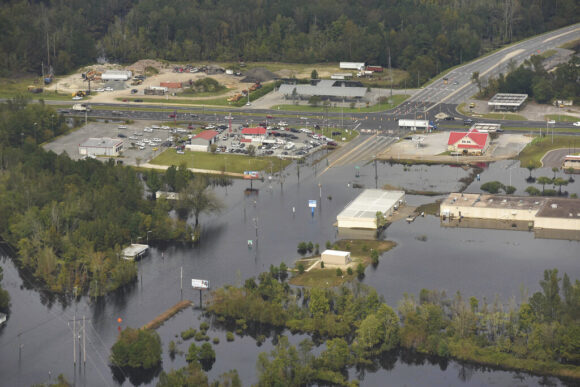Southeastern states’ coastlines have seen a dramatic rise in sea levels since 2010, according to two academic studies, raising new concerns for major population areas and for property insurers.
“The acceleration is most notable on the Southeast and Gulf Coasts, as quantified by the decadal rise rate, extreme annual sea level departure from the long-term trend, as well as the sea level record-breaking frequency and magnitude,” reads the abstract of a study published last month in the Journal of Climate.
Another research paper, in Nature Communications, found mean sea level rises that are “unprecedented” in at least 120 years.
The rapidly rising seas are the result of a warming climate, due to melting ice sheets, along with busy hurricane seasons, ocean circulation patterns, and other natural and man-made forces. Parts of Texas and Louisiana coastal areas continue to subside, but rapid sea level increases have also been seen in Cedar Key and Pensacola, Florida, and other parts of the Southeast. All of it is increasing the risk of flooding and property damage from hurricanes.
The researchers calculated the rate of sea level rise at one centimeter per year since 2010, more than double the global average rate, according to The Washington Post, which reported on the studies this week.
The studies do not agree on whether the trend will continue.
“It is therefore likely that the MSL (mean sea level) rates along the U.S. Southeast and Gulf Coast will return to the average rates projected by climate models within the next decade or so,” reads the Nature Communications report, by scientists at Tulane University, Old Dominion University and other research centers.
Photo: Flooding in North Carolina after Hurricane Florence in 2018. (Ken Blevins/The Star-News via AP)
Was this article valuable?
Here are more articles you may enjoy.



 Insurers Face Business Interruption Claims After Global Tech Outage
Insurers Face Business Interruption Claims After Global Tech Outage  With American Mobile Cancellations, Florida Mobile Home Market Has ‘Fallen Apart’
With American Mobile Cancellations, Florida Mobile Home Market Has ‘Fallen Apart’  Soccer Officials Arrested After Melee That Damaged Hard Rock Stadium in Miami
Soccer Officials Arrested After Melee That Damaged Hard Rock Stadium in Miami  Fortune 500’s Insured Losses for CrowdStrike Could Reach $1 Billion: Parametrix
Fortune 500’s Insured Losses for CrowdStrike Could Reach $1 Billion: Parametrix 

